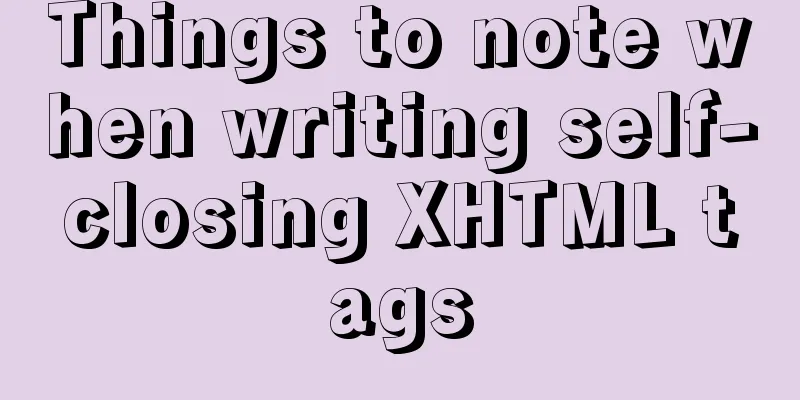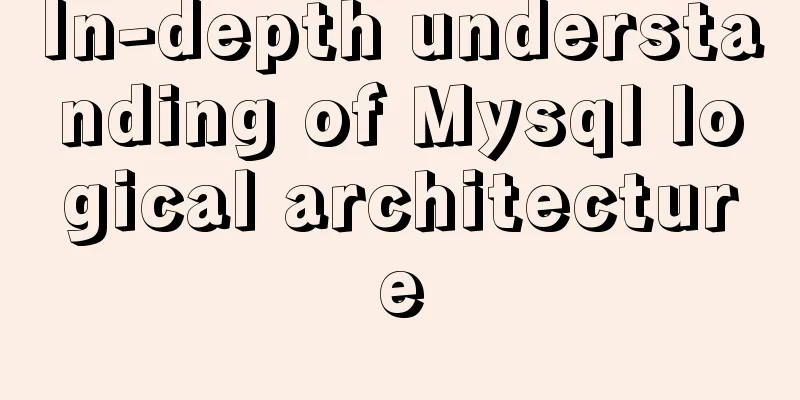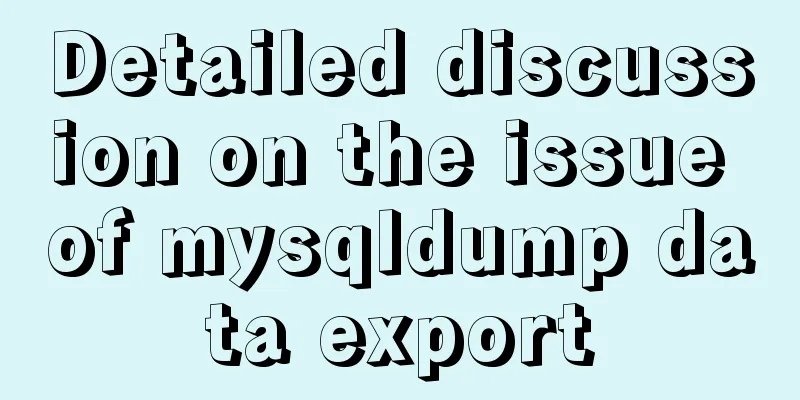Things to note when writing self-closing XHTML tags

|
The img tag in XHTML should be written like this: <img alt="" src="" />. This writing method is also called self-closing, which is completely legal in XML. If you are familiar with XML-related development, you may be accustomed to this way of writing, thinking that any element in XML that does not have child nodes can be written in this way, and then any tag with no content in XHTML can also be written in this way. In theory, XHTML allows any tag to be written in a self-closing manner, but browser compatibility has brought a new problem, that is, IE cannot correctly recognize the self-closing writing method of certain tags. String 8 Please try to enter the following XHTML code and browse it in IE: <p>hello <script type="text/javascript" /> world</p>. You will find that you can only see the hello at the beginning but not the world at the end. This is really inexplicable. Many of you may have encountered this problem before and spent hours on it without finding a reasonable explanation. String 4 The explanation comes from another similar code: <p>hello <textarea /> world</p>. Can you get a reasonable explanation by looking at its display effect in IE? We can see that the hello in the front is displayed normally, while the world in the back is displayed in the textarea. This proves that IE does not correctly recognize that the textarea tag has been closed by itself, but treats it as not closed and recognizes the following content as the content inside the textarea. Now we understand why the previous code cannot see the world behind it, because it is recognized as part of the script. This shows that when we use XHTML, we cannot use self-closing writing style as arbitrarily as XML. Only a few tags that do not need to be closed can be written in a self-closing way. For other tags, it is best to use paired closing writing style even if they do not have any content. Finally, I need to remind everyone that in fact, stupid parsers are not only found in IE. Problems caused by imprecise parsers may occur in many places. Therefore, when writing XHTML, we still have to accommodate some habits inherited from old HTML. We cannot just write it casually as if we think it meets the standards like real XML. Don't believe it? Let’s try another one: <p>hello <br></br> world</p>, and notice how it looks in IE and Opera. Some relevant specifications of XHTML: 1. All tags must have a corresponding end tag 2. The names of all tag elements and attributes must be lowercase 3. All XML tags must be properly nested 4. All attributes must be enclosed in quotation marks "" 5. Encode all < and & special symbols 6. Assign a value to all attributes 7. Don’t use “--” in comments |
>>: Some common mistakes with MySQL null
Recommend
Develop upload component function based on React-Dropzone (example demonstration)
This time I will talk about the skills of develop...
Vue3 (Part 2) Integrating Ant Design Vue
Table of contents 1. Integrate Ant Design Vue 2. ...
Detailed explanation of how to use Vue to load weather components
This article shares with you how to use Vue to lo...
Detailed explanation of mysql.user user table in Mysql
MySQL is a multi-user managed database that can a...
HTML implements the function of automatically refreshing or opening a new window for the URL link of the a element href
Sometimes we want to implement such a function: c...
How to set the text in the select drop-down menu to scroll left and right
I want to use the marquee tag to set the font scro...
How to install Nginx in CentOS
Official documentation: https://nginx.org/en/linu...
js to write the carousel effect
This article shares the specific code of js to ac...
JavaScript Advanced Closures Explained
Table of contents 1. The concept of closure Addit...
Detailed explanation of the underlying implementation of descending index, a new feature of MySQL 8
What is a descending index? You may be familiar w...
An example of using Lvs+Nginx cluster to build a high-concurrency architecture
Table of contents 1. Lvs Introduction 2. Lvs load...
Implementing a simple calculator with javascript
This article example shares the specific code of ...
JavaScript to achieve digital clock effect
This article example shares the specific code of ...
Summary of the style modification of the input box of type="file"
What is the input type="file"? I don'...
The difference between ENTRYPOINT and CMD in Dockerfile
In the Docker system learning tutorial, we learne...









